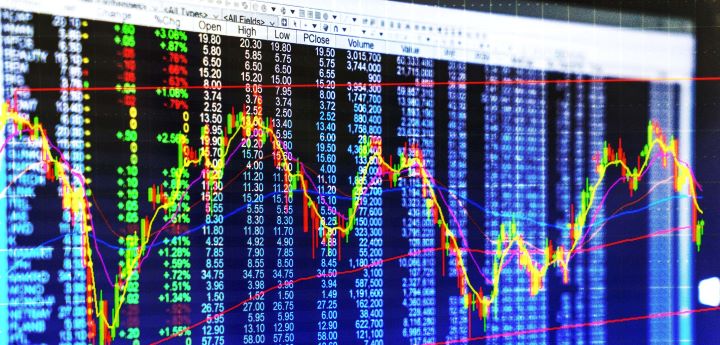In the wake of recent market turmoil, William Bourne looks at the impact of what is expected to be an extended period of higher gilt yields.
The UK 10-year gilt rose from a redemption yield of 1% at the beginning of this year to a high of 5% at the peak of the market disruption in late September. Government bond yields are at the heart of all finance because they are seen as the risk-free asset. With governments able to print money to pay gilt-edged stock owners back, there is in theory no risk of not receiving the return.
Yields have now fallen back to about 3.5% but, with inflation forecast to stay higher for longer, it seems inevitable that yields will stay higher than we have been used to for the past 15 years.
In this article, I look at the second-order effects of higher bond yields around the world. We have already seen an immediate local impact on leveraged LDI (liability driven investment) strategies, with gilts having to be sold to raise immediate cash for collateral margin calls. The culprits here were the lack of foresight put into LDI plumbing (for example, gilts settle at T+2, but the margin calls were needed at T), and the lack of liquidity in the gilts market. However, the catalyst for the market dysfunction was the rise in gilt yields.
The long-term impact of higher bond yields can broadly be divided into three areas: the cost of capital will be higher because it will cost more to borrow; the valuation of long-term assets will reduce as future returns are discounted at higher rates; and the risk premium on illiquid or risky assets will, all other things being equal, fall because the risk-free return is higher.
Active investment cycles
At a high level the increased cost of capital should lead to better decision-making, as any miscalculation or over-optimism will cause trouble more quickly. However, the flipside of this is that more companies and ventures will fail. That should favour active investment styles because simply harvesting market beta, the default stance for the past 30 years, will become less profitable.
Valuations of growth equities and long-term bonds have already tumbled in 2022. The longest index-linked gilt fell from a high of £297 to a low of £62 at a time when inflation expectations were rising. Forced selling by LDI funds was one reason, but another was the fall in the discounted value of their long-term income flows. The NASDAQ index, largely comprising growth equities, has fallen by 33% in 2022 with little sign of a change in course.
Other long duration asset classes, such as infrastructure, have so far been less affected. For example, specialist listed infrastructure funds such as HICL Infrastructure have seen the valuations of their underlying assets rise, while the share price premium has fallen by about 10%.
The shoe that hasn’t yet dropped is the reduction in the risk premium, especially in illiquid private markets. Investors are still being asked to invest for a 6-8% return in asset classes such as private credit or residential housing, when they can get a similar return on good quality corporate bonds. There may be good reasons for doing this, such as diversification or impact, but the premium investors will receive has fallen considerably and may not reflect the additional risks and illiquidity.
We are on a new page of investment history, and investors need to think about the second-order effects of higher bond yields.
Private equity
The valuation of private equity (PE) is particularly intriguing. Because assets are not marked to market, in many cases investors have not yet really seen the impact of 2022’s disruption on their net asset values (NAVs).
There is a school of thought that private markets are the way forward, especially where long-term capital is needed and where public markets have over the past 20 years failed in their primary role of being a source of new capital. The argument goes that PE is better placed to provide funding and will increasingly take over languishing public companies.
On the other hand, returns from PE should fall. As well as lower valuations, there is a greater chance of some of their assets failing and a higher cost of the leverage they depend on.
The interplay between PE and private debt firms may come to the fore here. Sponsored lending (where private debt funds lend to a PE vehicle, or even to its General Partner, rather than the underlying company) has become commonplace. In theory, the lenders should be beneficiaries from a higher cost of capital, but in practice their relationship is symbiotic and they will have to bear some of the pain, especially where recapitalisation of an asset is required.
Finally, the elephant in the room, at least in the UK, takes us back to LDI. Corporate pension funds have both had to sell gilts and seen a substantial fall in prices. Their allocations to private markets, by definition illiquid, have therefore risen by default. While they may choose to hold on to these higher weightings, rather than sell at big discounts, appetite for new investments in this area will be minimal. The result should again be lower valuations on existing assets, and therefore PE NAVs.
In summary, we are on a new page of investment history, and investors need to think about the second-order effects of higher bond yields. The higher cost of capital suggests that investors should be able to generate good returns, but it will require active decision-making rather than harvesting beta, especially in private markets. The LGPS and other investors, while not caught in the same bind as corporate pension schemes, will be looking at their experience and be more wary of illiquidity.
William Bourne is principal of Linchpin Advisory and has roles with five LGPS funds.
—————
FREE weekly newsletters
Subscribe to Room151 Newsletters
Room151 LinkedIn Community
Join here
Monthly Online Treasury Briefing
Sign up here with a .gov.uk email address
Room151 Webinars
Visit the Room151 channel














